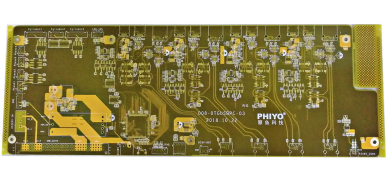What are the advantages of multi-layer circuit boards
Generally, the requirements for the structure design and process production of multilayer circuit boards are very high, and the higher the number of layers, the more difficult it is. Suitable for use in more complex circuits. So what are the advantages of using multilayer circuit boards, let’s learn together
The advantages of using multi-layer circuit boards are: high assembly density and small size; the connection between electronic components is shortened, and the signal transmission speed is increased; it is convenient for wiring; for high-frequency circuits, a ground layer is added to form the signal line to the ground. Constant low impedance; good shielding effect. However, the more layers, the higher the cost, the longer the processing cycle, and the more troublesome quality inspection.
In addition, from a cost point of view, when comparing the cost of the same area, although the cost of a multi-layer circuit board is higher than that of a single-layer circuit board, if other factors such as the miniaturization of the circuit board and the convenience of reducing noise are taken into consideration, the multi-layer circuit board The cost difference between circuit boards and single-layer circuit boards is not as high as expected. Although multiple layers in batches will affect the cost per unit area of the circuit board, there is still not a 4 times price difference. If a price difference of more than 4 times occurs, as long as you can try to reduce the use area of the circuit board, and try to reduce it to 1% of the double-layer board. /4 or less is fine.

Our common computer boards usually use four-layer circuit boards or six-layer circuit boards, but now there are more than 100 layers of practical printed circuit boards. The difference between the six-layer circuit board and the four-layer circuit board is in the middle, that is, there are two more internal signal layers between the ground layer and the power layer, which are thicker than the four-layer circuit board.
Multilayer circuit board is actually formed by laminating and bonding several etched single-sided or double-sided PCB boards. The double-sided PCB board is easy to distinguish. Looking at the light, except for the wiring on both sides, other places are transparent. For the four-layer PCB board and the six-layer PCB board, because the layers in the circuit board are very tightly combined, if there are corresponding marks on the board, there is no good way to distinguish.
For a simple circuit such as a radio, a single-sided PCB board or a double-sided PCB board can be used. However, with the development of microelectronics technology, the complexity of circuits has greatly increased, and higher requirements have been placed on the electrical performance of circuit boards. If single-sided circuit boards or double-sided circuit boards are used, the circuit volume will be very large. It also brings great difficulties to the wiring. In addition, the electromagnetic interference between the lines is not easy to handle, so a multilayer circuit board appears (the number of layers means there are several independent wiring layers, usually an even number) .
Ultra-thin circuit board manufacturers have three or more layers of conductor patterns for multilayer printed circuit boards, and the conductor layers are divided into inner and outer layers. The inner layer is the conductor pattern completely sandwiched inside the multilayer circuit board; the outer layer is the conductor pattern on the surface of the multilayer board. Generally, the inner conductor pattern is processed first during production, and the hole and the outer conductor pattern are processed after pressing, and the inner and outer layers are connected by metalized holes.